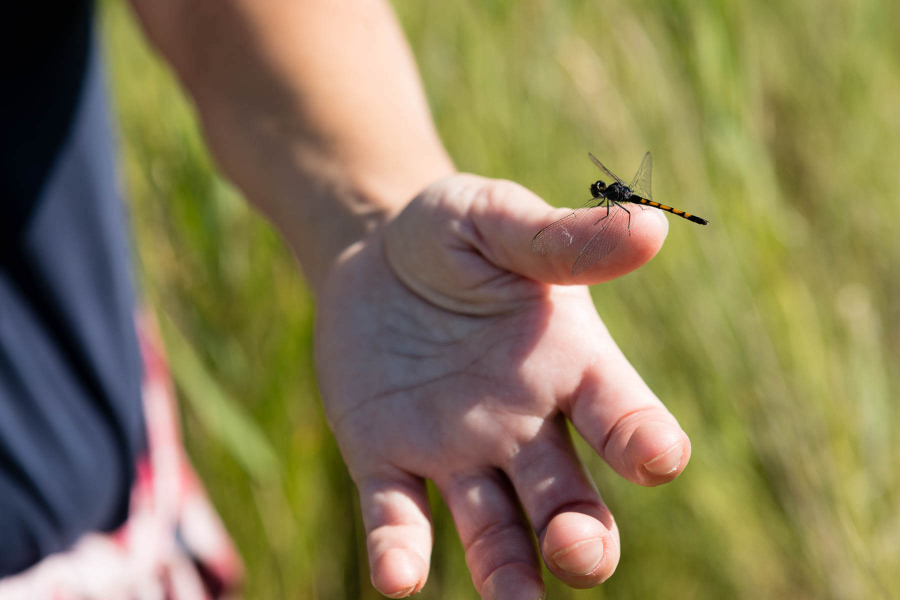How to let students find their own meaning

When it comes to getting students outdoors to learn about the environment, it helps if you can let them lead the way. After all, each student has their own unique interests and passions that might not always be apparent. Whether students are doing a project on pollinators, plastics or climate change, having room to make their own decisions is what helps them feel the most connected.
“Any time you have more student choice, you’re going to have students that are more engaged,” said Alan Cook, a middle school science teacher in Calvert County.
This is the premise behind MWEE 201, an advanced teacher training program that helps educators develop and plan Meaningful Watershed Educational Experiences, otherwise known as MWEEs. MWEEs are designed to help students connect with the Chesapeake Bay watershed and become future stewards of the land and water. A typical experience involves students investigating a local environmental issue, designing questions to answer based on that issue and then identifying an action that can be taken to resolve it. They can be taught by non-traditional educators such as environmental center instructors but also by in-classroom teachers.
In the MWEE 201 course, which is the follow up to MWEE 101 that over 600 people have completed already, teachers are coached through the process of designing a MWEE that best incorporates a student’s voice. The course was designed by a team of environmental educators and trainers from different organizations across the watershed, working to accomplish the Environmental Literacy Goal of the Chesapeake Bay Program. The 15-hour course counts as a continued learning credit, but also provides teachers with ready-made learning materials.
“At the end of MWEE 201 teachers will actually have a completed lesson plan that they’ll be able to use in their classroom,” said Krysta Hougen, an environmental learning specialist at the Chesapeake Bay Program and the lead facilitator of MWEE 201.
In-class MWEEs often correlate to whatever topic students are studying. Elementary school students learning about pollinators might build a pollinator garden or assess plant life in their neighborhood. Middle school students investigating climate change might examine how the migration of local birds is being impacted by warming temperatures. High school students might take on more challenging issues like examining how local waterways are being impacted by agricultural properties.
And while the MWEEs have to correlate to in-class learning, students have the freedom to adjust the project based on their interests or issues specific to their neighborhood.
“Students should be thinking about what’s in their community and how these environmental issues are impacting them,” said Hougen.
Teaching out of Calvert County, Cook piques his students’ interests by helping them understand how much their community is tied to the Chesapeake Bay. “I try to help them realize that even if they don’t see it directly, the town that they live in would not exist if it weren’t for the tourism and the commerce that the Bay brings,” said Cook. When developing his own MWEEs, Cook uses that correlation to guide students towards a project they can connect with.
The final stage of a MWEE, in which you identify an action to take, students are really given room to shine. Throughout the Chesapeake watershed, students have created factsheets about invasive plants, designed rain gardens to curb stormwater runoff and even written letters to elected officials advocating for issues that they have learned about. Through these actions, students go from learning about an issue and to seeing themselves as someone who can do something about it. This bridge from student to steward is what environmental literacy is all about.
To learn more about MWEE 101 and 201, visit baybackpack.com, the Chesapeake Bay Program’s online resource for educators in the watershed.

Comments
There are no comments.
Thank you!
Your comment has been received. Before it can be published, the comment will be reviewed by our team to ensure it adheres with our rules of engagement.
Back to recent stories